This article will teach you:
Practising structured innovation requires constant improvement, it means acknowledging that products and services can constantly be improved. In order to make these improvements, organisations must look for better solutions. Structured innovation involves finding these solutions in a methodical way, through process and procedure, instead of hoping for a 'eureka moment'.

Sustainable development is development your organisation can sustain for its lifetime. Sustainable development means not just having a good idea, but continually improving and refining the idea.
You simply need to look at the FTSE100 and Fortune 500 lists to see why sustainable development is so important. Since 1984 only two companies have been constant in the FTSE100 (Rothschild & Co and Reuters) and in the past 50 years 88% of companies in the Fortune 500 have disappeared.
In order to consistently develop, organisations must innovate, to learn more about how TRIZ can help in implementing sustainable design and innovation, Watch a recorded webinar by Oxford Creativity's founder Karen Gadd on the subject.
Once you have decided to implement a structured innovation initiative the next step is to create a strategy, without a strategy it is almost impossible to put an initiative into place. Read about how Sanofi used a strategy to implement sustainable development and increase the number of patents written from 6 per annum to over 600 per annum.
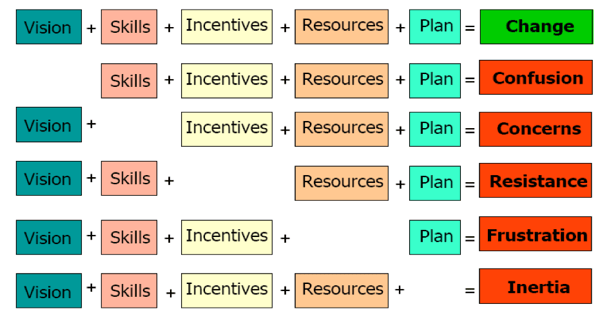
In order for real change to take place your organisation needs:
Structured Innovation requires an idea generation process, one of the best ways to develop a sustainable idea generation process is by taking your current idea generation process as a starting point.

A few helpful questions to ask are:
To learn more about how TRIZ can help you create an idea generation process and patent strategy watch our our on-demand webinar on Patent Strategy.
Continuous Improvement must focus on your company strategy, all of the ideas you generate using structured innovation must be relevant to your company's strategy.
In order to continue innovating and improving your company you must understand your companies strategy. If you do not have a clear understanding of your company's strategy then this is a good place to start!
To understand your company strategy think about:

Once you have understood what is at your companies core you can work out how to expand in a way which is inline with the company strategy. One example of this is when the digital company, Dassault Systèmes, expanded its use of CAD and started to work with architects to aid building the Sagrada Família.
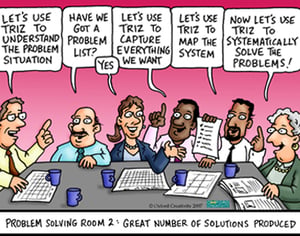 One of the easiest ways to practice continuous improvement is to ensure you are consistently solving problems, by solving problems within your organisation, you are improving it.
One of the easiest ways to practice continuous improvement is to ensure you are consistently solving problems, by solving problems within your organisation, you are improving it.
By making problem solving an integral part of your organisation you can not only please your customers, but ensure your organisation is structurally innovating.
Read about how Oxford Creativity helped Highways England partner A-one+ solve three difficult problems using the power of TRIZ here.
 If your organisation is already practicing continuous improvement, then are probably utilising Innovation Toolkits such as Lean or Root Cause Analysis. These Toolkits can be incredibly useful but, unlike TRIZ, they lack a problem solving element and do not provide the structure for idea generation.
If your organisation is already practicing continuous improvement, then are probably utilising Innovation Toolkits such as Lean or Root Cause Analysis. These Toolkits can be incredibly useful but, unlike TRIZ, they lack a problem solving element and do not provide the structure for idea generation.
At Oxford Creativity we have found that our clients benefit from using TRIZ alongside other toolkits. Over the years we have learnt the best ways to combine TRIZ with other toolkits and read our articles to find out more.
Oxford Creativity's founder and CEO, Karen Gadd, says "TRIZ enables companies to make the most of their greatest asset – their employees.” The employees are one of an organisations greatest assets and it is important to ensure you utilise their knowledge.

Resources come in many forms and your employees are your most important resource but existing framework such as intranets and methodologies should also be taken advantage of. For more information and a real world example read our case study to find out how Oxford Creativity utilised existing resources to implement TRIZ within BAE systems.
By using the knowledge and resources readily available to you and your organisation you can save time and money while improving your results.
Learn how Keith Rigby used the resources available to him in his day job to improve his health in his blog.
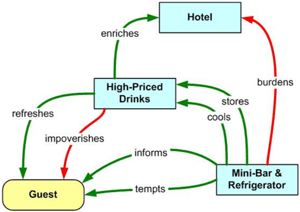 Function mapping (or function analysis), helps you to better understand the benefits and harms of each individual process within a system. By mapping the system as it is currently then mapping your ideal system you will gain a better idea of how to get where you want to be.
Function mapping (or function analysis), helps you to better understand the benefits and harms of each individual process within a system. By mapping the system as it is currently then mapping your ideal system you will gain a better idea of how to get where you want to be.
To learn how function mapping can be used in real world scenarios read how Buckinghamshire County Council decreased costs and increased revenue.
We tend to think of Creativity as something we are born with, not something we can learn. But, at Oxford Creativity we believe that using the power of TRIZ anyone can come up with creative and innovative ways to solve problems and create sustainable designs.

By encouraging people within your organisation to use creative tools such as the Contradiction Matrix and the Innovation Principles you will benefit from more innovative solutions to your problems and a sustainable idea generation process.
Here are our top 5 tips for introducing the tools to your organisation:

Brainstorming is a great way to come up with new and creative ideas but it has its problems too.
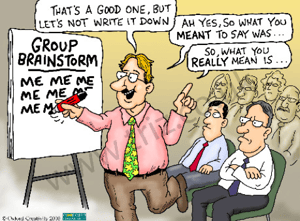
These include:
By understanding these problems you can begin to overcome them. Brainstorming can be a great place to start but it is important to collect, understand and select the best of the ideas generated in order to get the best results from brainstorming.
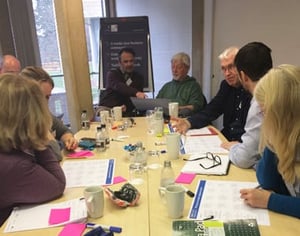
Workshops can be one of the best ways to come up with new ideas, which are crucial to innovation.
In order to get the most from these workshops it is important to choose the people who attend the workshops carefully and ensure they properly understand the problem. It is also vital to set parameters for what you want to achieve (the ideal outcome tool is very useful here) and carefully record what is said in the workshops.
To gain an insight into what goes on at a workshop held by Oxford Creativity read our A-one + case study and Gender equality blog post.
Oxford Creativity Ltd, Reg No. 03850535
Copyright 2025
